Scroll through The Coca-Cola Company's web page of brands and you'll find some big names: Bacardi, Dasani, Dr Pepper, Fanta, Lilt, Schweppes, Sprite. You'll also find some names less well-known in the UK, but no less important to the company: Powerade, Smart, Qoo. Far more significantly though, you'll find a plethora of brand variants based on its flagship Coca-Cola brand, ranging from the reasonable - Cherry Coke, Coca-Cola with Lime - to the niche - Coca-Cola with Raspberry, Coca-Cola Black Cherry Vanilla - to the rather more obscure - Coca-Cola Blak, Coca-Cola C2.
In fact, there are no fewer than 22 variations of the world's best-known soft drink, half of which are diet- related but only two of which, Coca-Cola and Diet Coke, can claim to consistently outsell the competition. Given Coca-Cola's deceleration, you can't help but ask whether this is a company at its innovative best, or one that is resorting to brand brute force to work itself out of a slump.
Coca-Cola is suffering the fortunes that many a corporate giant has suffered in the past 20 years or so. Once a brand that could do no wrong, in recent years the company has had to fight lawsuits, issue profit warnings and contend with low morale within its workforce. After decades of growth, sales have flattened and since 1999 the value of the brand has fallen 20% to $67bn, according to consultancy Interbrand. The Coca-Cola Company's chairman and CEO, Neville Isdell, admitted at the CIES World Food Business Summit in Paris in June that Coca-Cola needed a kick up the backside. "Changes needed to be made," he said, explaining his decision to come out of retirement in June 2004 to help turn things around. "We still had the brands, but we had forgotten how to win. My first step was to realign the company, to get people focused again. The second was to restructure the business and increase the investment in marketing and innovation."
In the past 12 months, more than 1,000 new drinks or variations have been launched worldwide. Nowhere has this flurry of new launches been more evident than in the UK. This May, Coca-Cola Enterprises introduced Coca-Cola Zero, a sugar-free 'Coke for blokes' that the company hopes will break sales of £150m in the first year. Backed by a rumoured £10m marketing campaign, CCE claimed it would be the product to reinvigorate the stalling carbonated drinks sector. A spokesperson says: "We will be innovating more, because it is the way we meet consumer needs. Coke Zero is set to be the biggest success story of 2006 and after only five weeks is ranked 19th in value across all soft drinks."
However, while there can be no doubt that NPD is the lifeblood of any fmcg company, the Coca-Cola Zero launch has left many analysts, and indeed consumers, baffled. William Grobel, consultant at brand valuation consultancy Intangible Business, says: "The main concern with Coke Zero is that it causes confusion among consumers. It's hard to see any difference between it and other products such as Diet Coke, or other sugar-free Coke products that have been launched in the past."
There's also the issue of brand stretch. Robin Knight, head of business development in the Business Advisory Firm at Deloitte, says: "They've taken very fast steps to adapt the Coke brand to new variants, but some may think it's been too much too fast and that they're running a risk of diluting the core values of the brand. How are they differentiating the markets for each new line?"
Of course, Coca-Cola won't live or die by Zero, but some say the thinking behind the launch is typical of its misguided approach to the UK market. The carbonated drinks sector is not as strong as it used to be, yet, unlike PepsiCo, which has branched out into snacks and fruit juice with Walkers and Tropicana, Coca-Cola has stubbornly stuck to its fizzy philosophy. PepsiCo's market valuation, at £103bn, is now roughly equivalent to Coca-Cola's - ten years ago Coca-Cola was three times bigger. Grobel says: "Coke is concentrating on a dying market."
Certainly it has given its competitors a head start in other key growth categories. Although the chilled fruit juice sector has been growing for some time, with sales up 39.7% to £243.5m [TNS 52 w/e 18 June 2006], Coca-Cola's Minute Maid was only re-launched into the UK 14 months ago, having been muscled out by PepsiCo's Tropicana after an initial launch in 1998. Coke claims that sales have been strong, but Sainsbury's has delisted it from all its stores and Spar from some of its stores.
Poor judgement, combined with bad luck, has also played a role. Coca-Cola's attempt to crack the bottled water sector, another high-growth category, ended in failure in the UK in 2004 when tap water bottled as Dasani was pulled just five weeks after its launch. And two attempts to challenge Red Bull for the top spot in the energy drinks sector, with Burn and BPM Energy, have yet to prove worthwhile.
So what, if anything, can Coca-Cola do to return to growth? Knight thinks Coca-Cola's weakness lies in its consumer knowledge. "In the past, whatever the occasion, Coke was the drink to have. People think differently now. You wouldn't dream of drinking Coke after going to the gym, for example. Coke has to adapt to people's lifestyles."
Surprisingly, Isdell agrees. One of the key points in his Manifesto for Growth is to deliver value to consumers according to ten need states that fall under three broad consumer requirements: Enjoyment Today, Feel Good Today and Feel Good Tomorrow. This was drawn up after interviews with 60,000 consumers and provides a spectrum of health niches, ranging from pure indulgence and appetite satiation to functional health and nutrition. This gives the NPD team a template, rather than just shooting in the dark, and has been behind the recent launches in the US of iced tea drinks. It's this level of insight that has been lacking and it could be the key to growth. After all, there's nothing much wrong with the bottling and distribution process, in the UK at least. "Coke's local bottling companies have very strong trade relationships and their availability levels and merchandising are brilliant. But they need to match this in head office by getting consumers to relate to the brand again," says Knight.
Half of Coca-Cola's global business is run by bottlers working under franchise agreements. These are the people on the ground who know the ins and outs of each local market. The problem has been that, despite their proximity to the customer, head office has been loath to let them influence strategy. This may be about to change. A large section of Isdell's growth plan is given over to Working with our Bottlers.
Of course, whatever Coca-Cola does, it still has to contend with an ever-more competitive market, an increasingly choosy consumer and what Knight calls the McDonald's/Microsoft syndrome - being a target for small but vocal anti-corporate groups. But if Coca-Cola can sort out its stable, Grobel says, "they can definitely get back to where they were. They have access to a huge distribution system ,so they can push things through really quickly."
Isdell acknowledges the work that is required but is nevertheless confident that Coke will regain its mantle as top of the pops. "The transition is complete. However, the transformation has only just begun," he says. n
In fact, there are no fewer than 22 variations of the world's best-known soft drink, half of which are diet- related but only two of which, Coca-Cola and Diet Coke, can claim to consistently outsell the competition. Given Coca-Cola's deceleration, you can't help but ask whether this is a company at its innovative best, or one that is resorting to brand brute force to work itself out of a slump.
Coca-Cola is suffering the fortunes that many a corporate giant has suffered in the past 20 years or so. Once a brand that could do no wrong, in recent years the company has had to fight lawsuits, issue profit warnings and contend with low morale within its workforce. After decades of growth, sales have flattened and since 1999 the value of the brand has fallen 20% to $67bn, according to consultancy Interbrand. The Coca-Cola Company's chairman and CEO, Neville Isdell, admitted at the CIES World Food Business Summit in Paris in June that Coca-Cola needed a kick up the backside. "Changes needed to be made," he said, explaining his decision to come out of retirement in June 2004 to help turn things around. "We still had the brands, but we had forgotten how to win. My first step was to realign the company, to get people focused again. The second was to restructure the business and increase the investment in marketing and innovation."
In the past 12 months, more than 1,000 new drinks or variations have been launched worldwide. Nowhere has this flurry of new launches been more evident than in the UK. This May, Coca-Cola Enterprises introduced Coca-Cola Zero, a sugar-free 'Coke for blokes' that the company hopes will break sales of £150m in the first year. Backed by a rumoured £10m marketing campaign, CCE claimed it would be the product to reinvigorate the stalling carbonated drinks sector. A spokesperson says: "We will be innovating more, because it is the way we meet consumer needs. Coke Zero is set to be the biggest success story of 2006 and after only five weeks is ranked 19th in value across all soft drinks."
However, while there can be no doubt that NPD is the lifeblood of any fmcg company, the Coca-Cola Zero launch has left many analysts, and indeed consumers, baffled. William Grobel, consultant at brand valuation consultancy Intangible Business, says: "The main concern with Coke Zero is that it causes confusion among consumers. It's hard to see any difference between it and other products such as Diet Coke, or other sugar-free Coke products that have been launched in the past."
There's also the issue of brand stretch. Robin Knight, head of business development in the Business Advisory Firm at Deloitte, says: "They've taken very fast steps to adapt the Coke brand to new variants, but some may think it's been too much too fast and that they're running a risk of diluting the core values of the brand. How are they differentiating the markets for each new line?"
Of course, Coca-Cola won't live or die by Zero, but some say the thinking behind the launch is typical of its misguided approach to the UK market. The carbonated drinks sector is not as strong as it used to be, yet, unlike PepsiCo, which has branched out into snacks and fruit juice with Walkers and Tropicana, Coca-Cola has stubbornly stuck to its fizzy philosophy. PepsiCo's market valuation, at £103bn, is now roughly equivalent to Coca-Cola's - ten years ago Coca-Cola was three times bigger. Grobel says: "Coke is concentrating on a dying market."
Certainly it has given its competitors a head start in other key growth categories. Although the chilled fruit juice sector has been growing for some time, with sales up 39.7% to £243.5m [TNS 52 w/e 18 June 2006], Coca-Cola's Minute Maid was only re-launched into the UK 14 months ago, having been muscled out by PepsiCo's Tropicana after an initial launch in 1998. Coke claims that sales have been strong, but Sainsbury's has delisted it from all its stores and Spar from some of its stores.
Poor judgement, combined with bad luck, has also played a role. Coca-Cola's attempt to crack the bottled water sector, another high-growth category, ended in failure in the UK in 2004 when tap water bottled as Dasani was pulled just five weeks after its launch. And two attempts to challenge Red Bull for the top spot in the energy drinks sector, with Burn and BPM Energy, have yet to prove worthwhile.
So what, if anything, can Coca-Cola do to return to growth? Knight thinks Coca-Cola's weakness lies in its consumer knowledge. "In the past, whatever the occasion, Coke was the drink to have. People think differently now. You wouldn't dream of drinking Coke after going to the gym, for example. Coke has to adapt to people's lifestyles."
Surprisingly, Isdell agrees. One of the key points in his Manifesto for Growth is to deliver value to consumers according to ten need states that fall under three broad consumer requirements: Enjoyment Today, Feel Good Today and Feel Good Tomorrow. This was drawn up after interviews with 60,000 consumers and provides a spectrum of health niches, ranging from pure indulgence and appetite satiation to functional health and nutrition. This gives the NPD team a template, rather than just shooting in the dark, and has been behind the recent launches in the US of iced tea drinks. It's this level of insight that has been lacking and it could be the key to growth. After all, there's nothing much wrong with the bottling and distribution process, in the UK at least. "Coke's local bottling companies have very strong trade relationships and their availability levels and merchandising are brilliant. But they need to match this in head office by getting consumers to relate to the brand again," says Knight.
Half of Coca-Cola's global business is run by bottlers working under franchise agreements. These are the people on the ground who know the ins and outs of each local market. The problem has been that, despite their proximity to the customer, head office has been loath to let them influence strategy. This may be about to change. A large section of Isdell's growth plan is given over to Working with our Bottlers.
Of course, whatever Coca-Cola does, it still has to contend with an ever-more competitive market, an increasingly choosy consumer and what Knight calls the McDonald's/Microsoft syndrome - being a target for small but vocal anti-corporate groups. But if Coca-Cola can sort out its stable, Grobel says, "they can definitely get back to where they were. They have access to a huge distribution system ,so they can push things through really quickly."
Isdell acknowledges the work that is required but is nevertheless confident that Coke will regain its mantle as top of the pops. "The transition is complete. However, the transformation has only just begun," he says. n




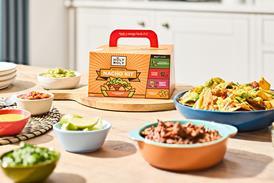


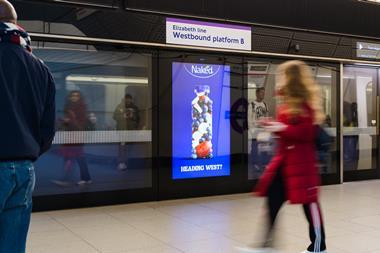
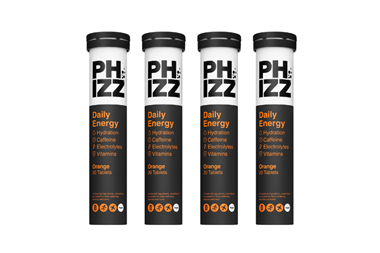



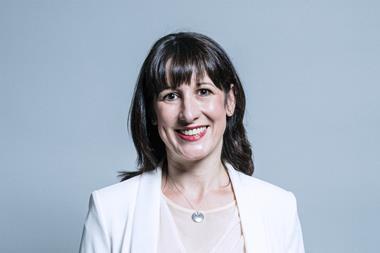
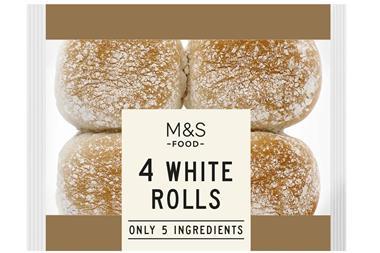


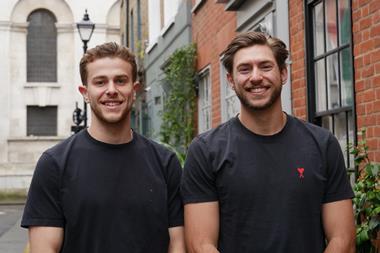
No comments yet